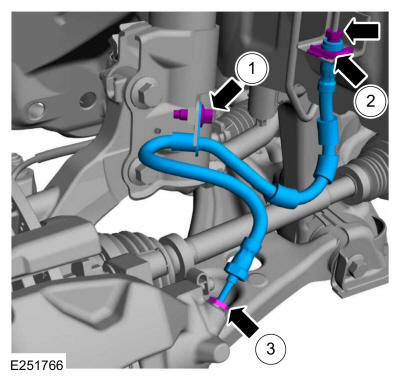Ford Ecosport: Engine - 2.0L Duratec-HE (129kW/175PS) / Disassembly - Engine
Special Tool(s) /
General Equipment
 |
205-153
(T80T-4000-W)
Handle |
 |
303-103
(T74P-6375-A)
Holding Tool, Flywheel
T74P-77000-A
TKIT-2009TC-F |
 |
303-1247
VCT Spark Plug Tube Seal Remover and Installer
TKIT-2006UF-FLM
TKIT-2006UF-ROW |
 |
303-1565
Alignment Tool, Camshaft
TKIT-2010C-FLM |
 |
303-409
(T92C-6700-CH)
Remover, Crankshaft Seal
TKIT-1992-FH/FMH/FLMH
TKIT-1993-LMH/MH |
 |
303-507
Timing Peg, Crankshaft TDC
TKIT-2001N-FLM
TKIT-2001N-ROW |
| Strap Wrench |
| Floor Crane |
| Plastic Scraper |
| Hose Clamp Remover/Installer |
NOTICE:
Do not loosen or remove the crankshaft pulley bolt without first
installing the special tools as instructed in this procedure. The
crankshaft pulley and the crankshaft timing sprocket are not keyed to
the crankshaft. The crankshaft, the crankshaft sprocket and the pulley
are fitted together by friction. For that reason, the crankshaft
sprocket is also unfastened if the pulley bolt is loosened. Before any
repair requiring loosening or removal of the crankshaft pulley bolt, the
crankshaft and camshafts must be locked in place by the special service
tools, otherwise severe engine damage can occur.
NOTICE:
During engine repair procedures, cleanliness is extremely
important. Any foreign material, including any material created while
cleaning gasket surfaces that enters the oil passages, coolant passages
or the oil pan, can cause engine failure.
NOTICE:
Do not use metal scrapers, wire brushes, power abrasive discs or
other abrasive means to clean the sealing surfaces. These tools cause
scratches and gouges that make leak paths. Use a plastic scraping tool
to remove all traces of the gasket.
NOTICE:
Place clean, lint-free shop towels over exposed engine cavities.
Carefully remove the towels so foreign material is not dropped into the
engine. Any foreign material (including any material created while
cleaning gasket surfaces) that enters the oil passages or the oil pan,
may cause engine failure.
NOTICE:
If the engine is repaired or replaced because of upper engine
failure, typically including valve or piston damage, check the intake
manifold for metal debris. If metal debris is found, install a new
intake manifold. Failure to follow these instructions can result in
engine damage.
NOTE:
If it is necessary to install a new timing chain tensioner, a
cast iron tensioner is to be replaced with an aluminum tensioner
(6K254). The existing bolts must be discarded and replaced with new
bolts (6K282).
NOTE:
Refer to exploded views in Description and Operation.
-
-
Install Special Service Tool: 303-103
(T74P-6375-A)
Holding Tool, Flywheel.
-
Remove the bolts and the flexplate.
-
Mount the engine on a engine stand.
-
Remove the floor crane and lift equipment.
Use the General Equipment: Floor Crane
-
Release the quick release coupling and disconnect the crankcase vent tube from the valve cover.
Refer to: Spring Lock Couplings (310-00C Fuel System - General
Information - 2.0L Duratec-HE (129kW/175PS), General Procedures).
-
-
Disconnect the CKP and A/C compressor electrical connectors.
-
Detach the wiring harness retainers.
-
-
Disconnect the VCT oil control solenoid electrical connectors.
-
Disconnect the ignition coil-on-plug electrical connectors.
-
Remove the cover and disconnect the CHT sensor electrical connector.
-
Disconnect the CMP sensor electrical connectors.
-
Detach the wiring harness retainers and position aside the engine wiring harness.
-
Disconnect the ECT sensor electrical connector and detach the wiring harness retainers.
-
-
Detach and disconnect the fuel rail wiring harness electrical connector.
-
Detach the wiring harness retainer from the intake manifold.
-
Disconnect KS wiring harness electrical connectors.
-
-
Remove the nut and battery B+ cable.
-
Disconnect the generator electrical connector.
-
Detach the generator wiring harness retainer from the coolant hose.
-
-
Remove the bolt from the ground cable.
-
Disconnect throttle body wiring harness electrical connector and retainer.
-
Detach the wiring harness retainers and remove the engine wiring harness.
-
Loosen the coolant pump pulley bolts.
-
-
Install the tool and release the tension on the accessory drive belt tensioner.
-
Remove the accessory drive belt.
-
Release the tool and remove.
-
Remove the bolts and the accessory drive belt tensioner.
-
Remove the bolts and the coolant pump pulley.
-
Remove the bolts and the coolant pump.
-
Discard the coolant pump O-ring seal.
-
Remove the bolts and the generator.
-
If equipped, remove the block heater.
-
Release the clamp and position the coolant hoses aside.
Use the General Equipment: Hose Clamp Remover/Installer
-
Release the clamp and remove the coolant hoses.
Use the General Equipment: Hose Clamp Remover/Installer
-
Remove the bolts and the thermostat housing.
-
Discard the thermostat housing gasket.
-
Detach the KS wiring harness connectors from the intake manifold.
-
-
Remove the intake manifold bolts.
-
Disconnect the crankcase vent oil separator tube and remove the intake manifold.
-
-
Visually inspect the intake manifold gaskets for nicks,
cuts and abrasions. If these conditions are not present, the gaskets may
be reused.
-
Install new intake manifold gaskets if necessary.
-
Clean and inspect all of the sealing surfaces of the intake manifold.
-
-
If the engine is repaired or replaced because of upper
engine failure, typically including valve or piston damage, check the
intake manifold for metal debris.
-
If metal debris is found, install a new intake manifold.
-
-
Detach the coolant hose retainer.
-
Release the clamp and remove the coolant hose.
Use the General Equipment: Hose Clamp Remover/Installer
-
Detach the fuel rail wiring harness retainers and remove the fuel rail insulator.
-
-
Disconnect the FRP sensor electrical connector.
-
Disconnect the fuel injector electrical connectors and remove the fuel wiring harness.
-
NOTE:
Use care when removing the fuel injection pump noise
insulator. Spreading the openings will aid in removing the fuel
injection pump noise insulator and reduce the risk of damage.
Remove the fuel injection pump insulator.
-
-
Loosen the high pressure fuel tube flare nuts.
-
Remove the bolts and the high pressure fuel tube.
-
Discard the high pressure fuel tube.
-
Remove the bolts and the crankcase vent separator.
-
Inspect the crankcase oil vent separator gasket and replace as needed.
-
Remove the bolts and the oil filter adapter.
-
Remove and discard the oil filter adapter gasket.
-
NOTICE:
The RH KS must be installed in the 6 o'clock position and the LH KS
must be installed in the 4 o'clock position. Failure to follow these
instructions may result in damage to the engine.
-
Mark the location of the RH and LH KS .
-
Remove the bolts and the RH and LH KS .
-
Remove the bolts and the catalytic converter bracket.
-
Remove the bolts and the halfshaft bracket.
-
NOTE:
Alternately loosen the 2 fuel injection pump bolts one
complete revolution at a time, remove the 2 bolts and fuel injection
pump.
-
Remove the bolts and the high-pressure fuel pump.
-
Remove and discard the high-pressure fuel pump O-ring seal.
-
Remove the high-pressure fuel pump tappet.
-
Inspect the high-pressure fuel pump tappet. If any flat
spots or scoring are found, especially in the indicated areas, then
inspect the high-pressure fuel pump and the high-pressure fuel pump
tappet drive lobe. Install new components as necessary.
-
Remove the nuts and the high-pressure fuel pump bracket.
-
Remove the stud bolts and the high-pressure fuel pump drive unit.
-
Inspect and replace the gasket, if necessary.
-
Remove the bolts and the coolant outlet.
-
Inspect and replace the gasket, if necessary.
-
Remove the oil level indicator.
-
NOTE:
When removing the ignition coil-on-plugs, a slight twisting motion will break the seal and ease removal.
Remove the bolts and the ignition coil-on-plugs.
-
Remove the engine appearance cover bolts.
-
Loosen the fasteners and remove the valve cover.
-
Remove and discard the valve cover gaskets.
-
NOTE:
The VCT solenoid seals should only be replaced if they are damaged.
Inspect the VCT
oil control solenoid seals for damaged. If damaged, using the special
tools, remove the VCT oil control solenoid seals and discard.
Use Special Service Tool: 205-153
(T80T-4000-W)
Handle.
Remove Special Service Tool: 303-1247
VCT Spark Plug Tube Seal Remover and Installer.
-
NOTICE:
Do not use metal scrapers, wire brushes, power abrasive
discs or other abrasive means to clean the sealing surfaces. These tools
cause scratches and gouges which make leak paths.
Clean the valve cover.
-
NOTICE:
Do not use metal scrapers, wire brushes, power abrasive
discs or other abrasive means to clean the sealing surfaces. These tools
cause scratches and gouges which make leak paths.
Make sure that the mating faces are clean and free of foreign material.
Use the General Equipment: Plastic Scraper
-
Turn the crankshaft until piston no.1 is 45 degrees before TDC by using
the guide holes on the engine front cover and the crankshaft pulley.
-
Remove the bolts and the CKP sensor.
-
Remove the engine plug bolt.
-
Install Special Service Tool: 303-507
Timing Peg, Crankshaft TDC.
-
NOTICE:
Failure to position the No. 1 piston at TDC can result in damage to the
engine. Turn the engine in the normal direction of rotation only.
NOTE:
The special tool will contact the crankshaft and prevent it from
turning past TDC . However, the crankshaft can still be rotated in the
counterclockwise direction. The crankshaft must remain at the TDC
position during the crankshaft pulley removal and installation.
Using the crankshaft pulley bolt, turn the crankshaft clockwise slowly until contact is made with the special tool.
-
NOTICE:
The special tool is for camshaft alignment only. Using
this tool to prevent engine rotation can result in engine damage.
Install Special Service Tool: 303-1565
Alignment Tool, Camshaft.
-
NOTE:
The crankshaft must remain in the TDC
position during removal of the pulley bolt or damage to the engine can
occur. Therefore, the crankshaft pulley must be held in place with the
special tool, and the crankshaft pulley bolt should be removed using an
air impact wrench (1/2-in drive minimum).
Using a strap wrench, remove the bolt and the crankshaft pulley.
Use the General Equipment: Strap Wrench
-
Install the original crankshaft pulley bolt and washer.
-
NOTICE:
Use care not to damage the engine front cover or the crankshaft when removing the seal.
-
Using the crankshaft seal remover, remove the crankshaft front seal.
Use Special Service Tool: 303-409
(T92C-6700-CH)
Remover, Crankshaft Seal.
-
Discard the crankshaft front seal.
-
Remove the crankshaft pulley bolt and washer.
-
Remove the bolts and the engine front cover.
-
Clean and prepare the RTV sealing surface.
Refer to: RTV Sealing Surface Cleaning and Preparation (303-00 Engine System - General Information, General Procedures).
-
Clean and prepare the RTV sealing surface.
Refer to: RTV Sealing Surface Cleaning and Preparation (303-00 Engine System - General Information, General Procedures).
-
NOTICE:
Do not rely on the special tool to prevent camshaft rotation. Damage to the tool or the camshaft can occur.
Using a wrench on the flats of the exhaust camshaft to prevent camshaft rotation, loosen the exhaust VCT unit bolt.
-
NOTICE:
Do not rely on the special tool to prevent camshaft rotation. Damage to the tool or the camshaft can occur.
Using a wrench on the flats of the intake camshaft to prevent camshaft rotation, loosen the intake VCT unit bolt.
-
NOTE:
If equipped with cast iron timing chain tensioner.
-
Using a small pick, release and hold the ratchet mechanism.
-
While holding the ratchet mechanism in the released
position, compress the tensioner by pushing the timing chain arm toward
the tensioner.
-
Insert a holding pin into the hole to retain the tensioner.
-
NOTE:
If it is necessary to install a new timing chain
tensioner, a cast iron tensioner is to be replaced with an aluminum
tensioner (6K254). The existing bolts must be discarded and replaced
with new bolts (6K282).
NOTE:
If equipped with cast iron timing chain tensioner.
Remove the bolts and the timing chain tensioner.
-
NOTE:
If equipped with aluminum timing chain tensioner.
Remove the bolts and the timing chain tensioner.
-
-
Remove the timing chain tensioner arm.
-
Remove the bolts and the timing chain guide.
-
-
Remove the bolts and the VCT units.
-
NOTICE:
The special tool is for camshaft alignment only. Using
this tool to prevent engine rotation can result in engine damage.
Remove Special Service Tool: 303-1565
Alignment Tool, Camshaft.
-
Remove the bolts and the VCT oil control solenoids.
-
Remove bolts and front camshaft bearing cap.
-
NOTICE:
Failure to follow the camshaft loosening procedure can result in damage to the camshafts.
NOTICE:
Note the position of the camshaft lobes on the No. 1 cylinder for installation reference.
NOTICE:
Mark the location and orientation of each camshaft bearing cap.
-
Loosen the camshaft bearing caps in sequence 2 turns at a
time until all tension is released from the camshaft bearing caps.
-
Remove the camshaft bearing caps.
-
Clean the rear camshaft cap.
-
NOTE:
If the camshafts and valve tappets are to be reused,
mark the location of the valve tappets to make sure they are assembled
in their original positions.
Remove the valve tappets.
-
NOTE:
The number on the valve tappets only reflects the digits
that follow the decimal. For example, a tappet with the number 0.650
has the thickness of 3.650 mm.
Inspect the valve tappets.
-
NOTE:
The cylinder head bolts must be discarded and new bolts
must be installed. They are tighten-to-yield designed and cannot be
reused.
-
Remove the bolts and the cylinder head.
-
Remove and discard the cylinder head gasket.
-
Remove the cylinder block bushings.
-
NOTICE:
Do not use metal scrapers, wire brushes, power abrasive
discs or other abrasive means to clean the sealing surfaces. These tools
cause scratches and gouges that make leak paths.
-
Clean the cylinder head sealing surfaces.
-
Check the cylinder head distortion.
Refer to: Cylinder Head Distortion (303-00 Engine System - General Information, General Procedures).
-
NOTICE:
Do not use metal scrapers, wire brushes, power abrasive
discs or other abrasive means to clean the sealing surfaces. These tools
cause scratches and gouges that make leak paths.
-
Clean the cylinder block sealing surfaces.
-
Check the cylinder block distortion.
Refer to: Cylinder Block Distortion (303-00 Engine System - General Information, General Procedures).
-
Remove the bolts and the A/C compressor.
-
Remove the bolts and the oil pan.
-
Remove the bolts and the oil pickup and screen.
-
Remove and discard the oil pickup and screen O-ring seal.
-
Clean and prepare the RTV sealing surface.
Refer to: RTV Sealing Surface Cleaning and Preparation (303-00 Engine System - General Information, General Procedures).
-
Clean and prepare the RTV sealing surface.
Refer to: RTV Sealing Surface Cleaning and Preparation (303-00 Engine System - General Information, General Procedures).
-
-
Remove the bolts and the crankshaft rear seal.
-
Discard the crankshaft rear seal.
-
-
Push the tensioner spring down and release the spring from under the shoulder bolt.
-
Remove the shoulder bolts and the tensioner and chain.
-
Remove the crankshaft sprocket.
-
Remove the bolt and oil pump sprocket.
-
Remove the bolts and the oil pump.
-
Clean the mating surfaces of the oil pump.
-
Remove Special Service Tool: 303-507
Timing Peg, Crankshaft TDC.
-
Before removing the pistons, inspect the top of the cylinder
bores. If necessary, remove the ridge or carbon deposits from each
cylinder using an abrasive pad or equivalent, following manufacturer's
instructions.
-
NOTE:
Clearly mark the connecting rods, connecting rod caps
and connecting rod bearings in numerical order for correct orientation
for reassembly.
Remove the bolts and the connecting rod caps.
-
NOTICE:
Do not scratch the cylinder walls or crankshaft journals with the connecting rod.
NOTE:
Repeat until all the piston/rod assemblies are removed from the engine block.
Remove the piston/rod assembly from the engine block.
-
Inspect the pistons.
Refer to: Piston Inspection (303-00 Engine System - General Information, General Procedures).
-
Remove the bolts and the main bearing beam.
-
NOTE:
If the main bearings are being reused, mark them in order for correct orientation and reassembly.
Remove the main bearing beam bearings.
-
Remove the crankshaft.
-
NOTE:
If the main bearings are being reused, mark them in order for correct orientation and reassembly.
NOTE:
The center bulkhead has the thrust bearing.
Remove the crankshaft main bearings.
-
NOTE:
If the engine piston oil coolers are being reused, mark them in order for correct location during reassembly.
NOTE:
The front bulkhead does not have an engine piston oil cooler.
Remove the engine piston oil coolers.
Special Tool(s) /
General Equipment
303-1249Valve Spring CompressorTKIT-2006UF-FLMTKIT-2006UF-ROW
303-1567Sizer, Teflon SealTKIT-2010C-FLM
303-300
(T87C-6565-A)
Set, Valve Spring CompressorTKIT-1988-FESTIVAT88C-1000-STTKIT-1988-TRACERTKIT-2009TC-F
303-350
(T89P-6565-A)
Compressor, Valve SpringTKIT-1990-LMHTKIT-1989-FTKIT-1989-FMTKIT-1989-FLM
..
Other information:
Check
NOTE:
Refer to the appropriate Section 303-01 for the specification.
NOTE:
Crankshaft main bearing journals must be within specifications before checking journal clearance.
Remove the crankshaft main bearing cap and crankshaft main bearing.
Position a piece of Plastigage across the crankshaft main bearing surface.
..
Item
Part Number
Description
1
—
Air cleaner assembly
2
—
Positive crankcase ventilation (PCV) hose from valve cover to air cleaner outlet pipe
3
—
Valve cover
Item
Part Number
Description
1
—
PCV valve to intake manifold PCV hose
2
—
Crankcase vent o..









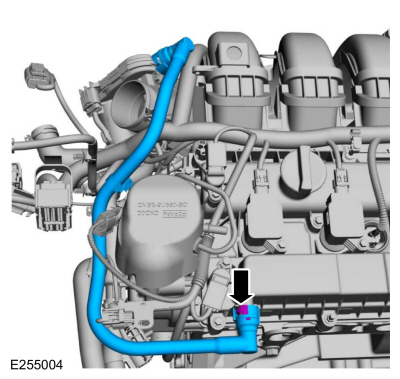
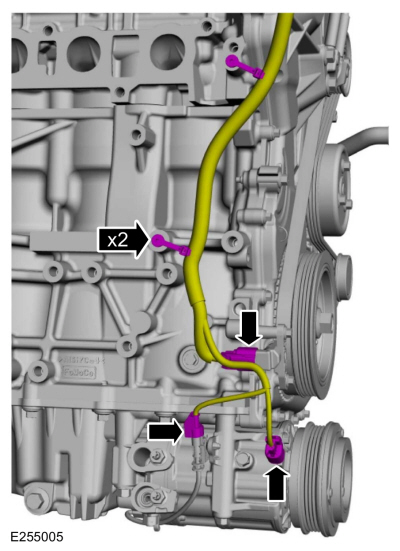
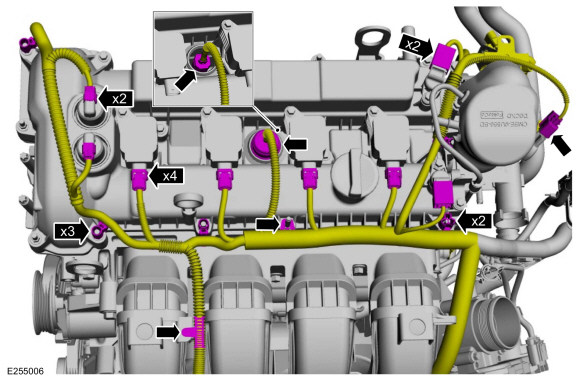


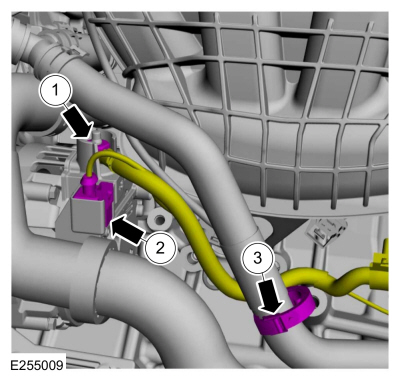


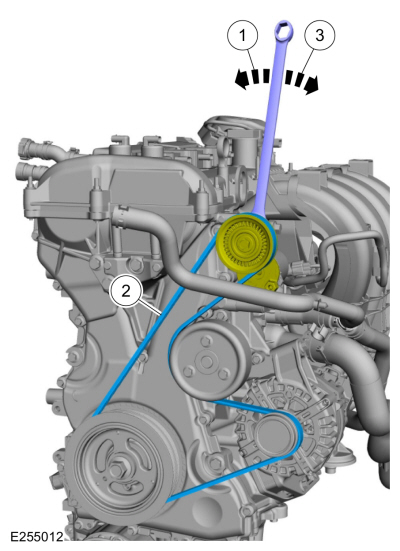

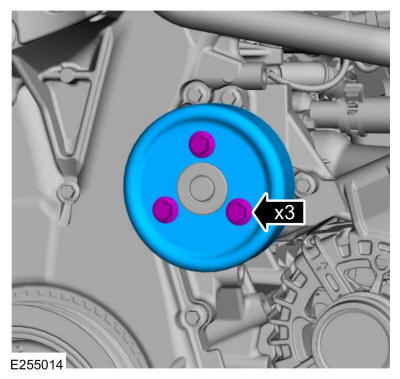
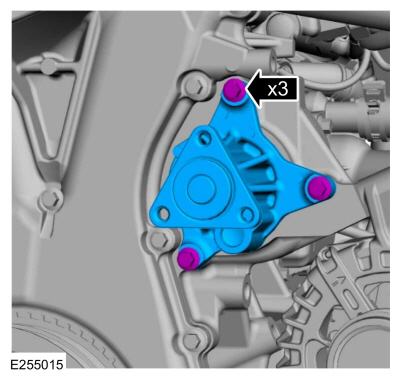
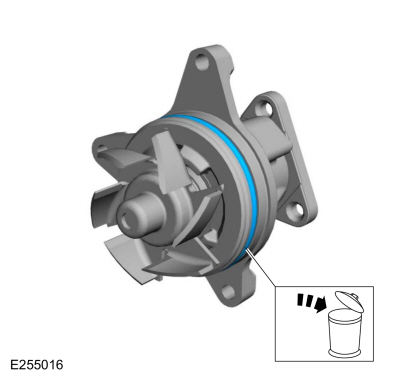


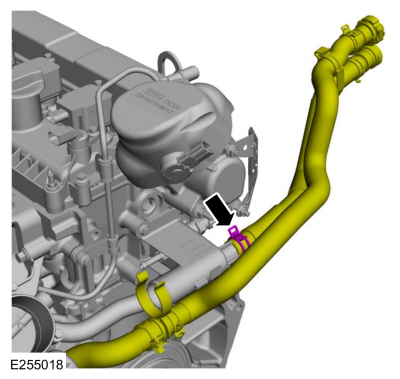
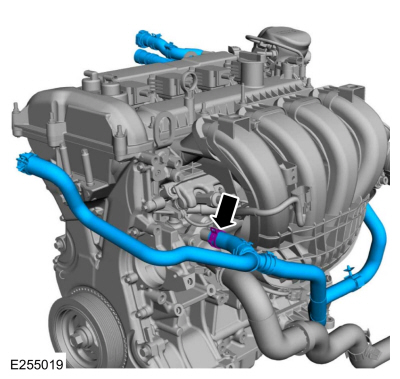
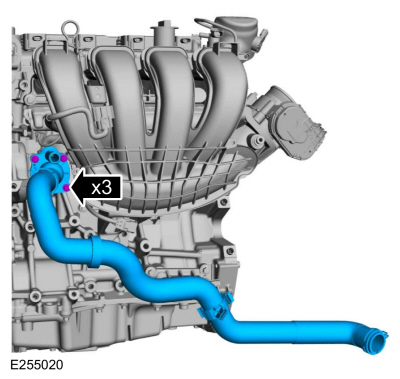
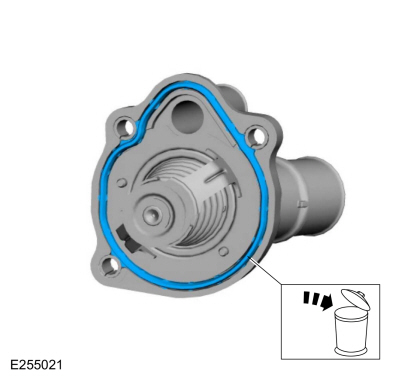
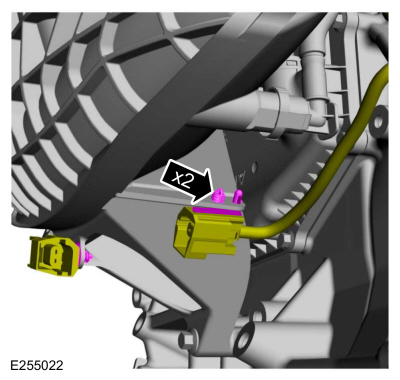

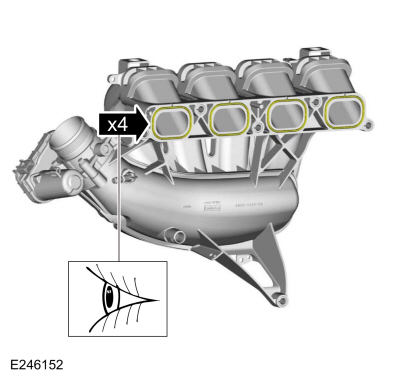
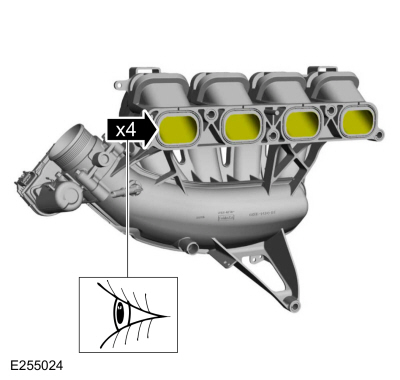
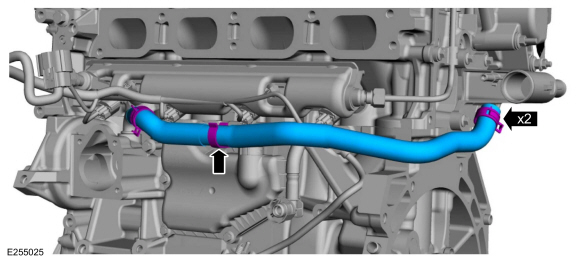

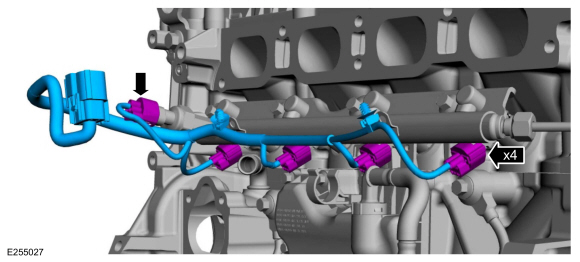



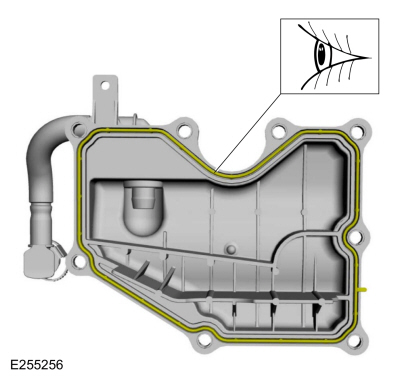

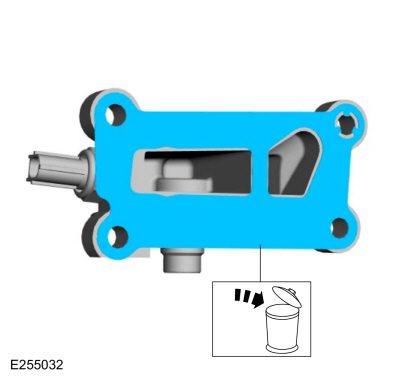

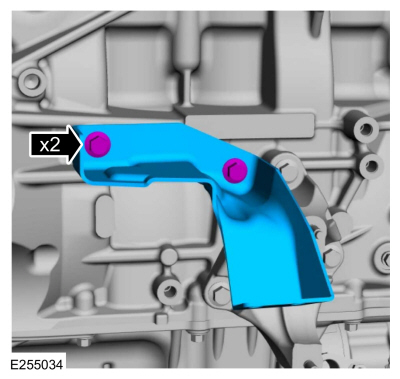


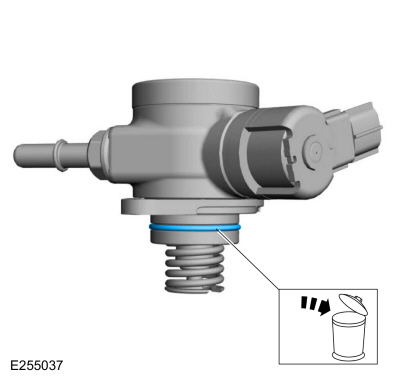


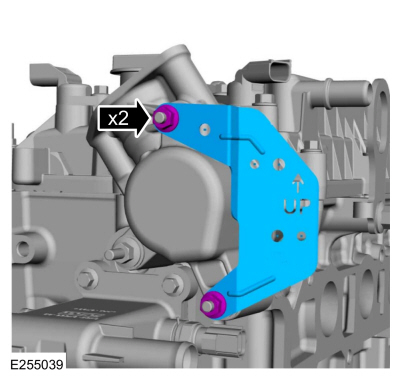
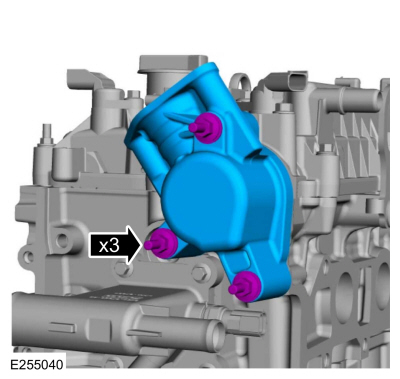

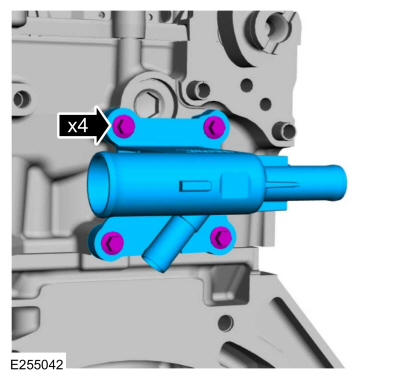


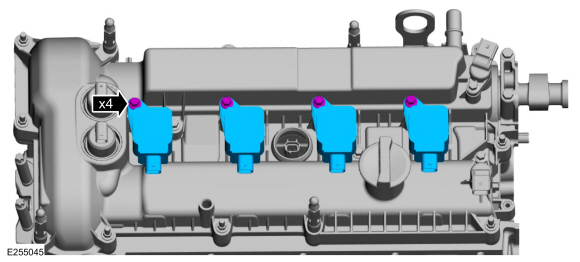


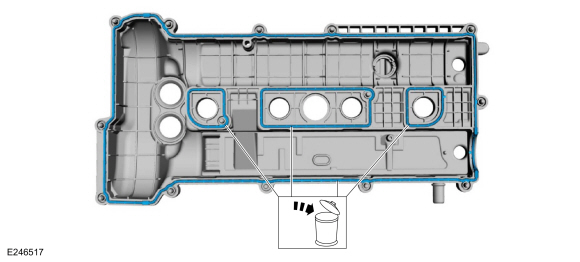




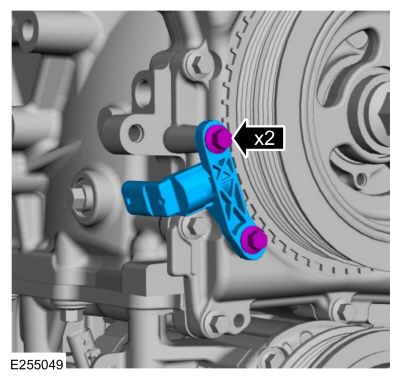


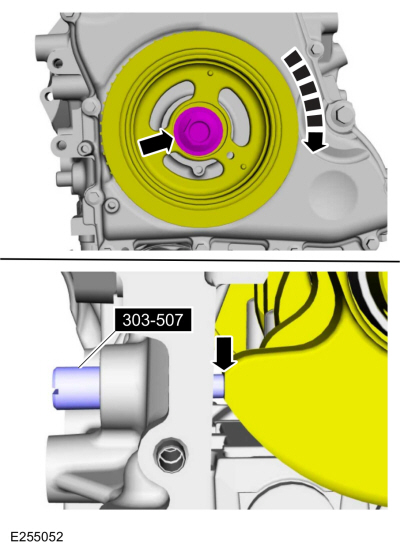
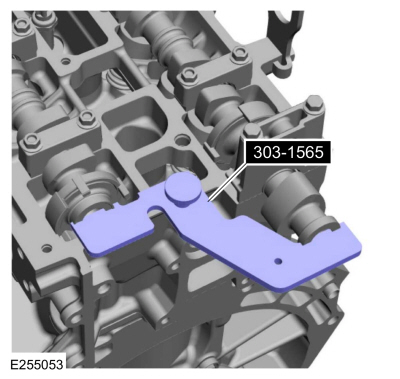

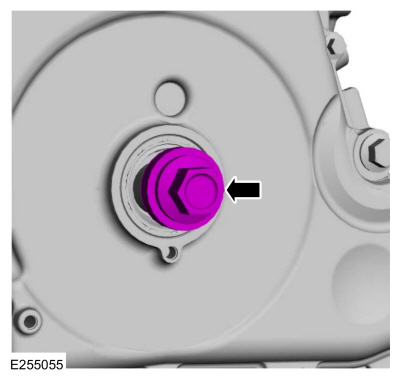
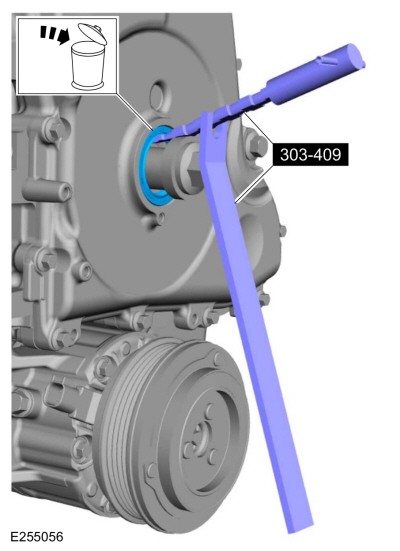
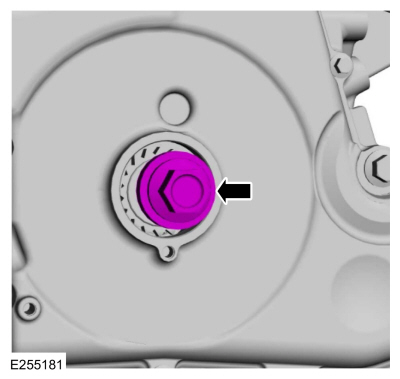

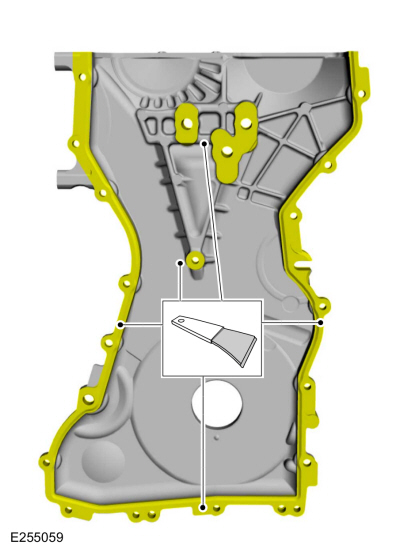




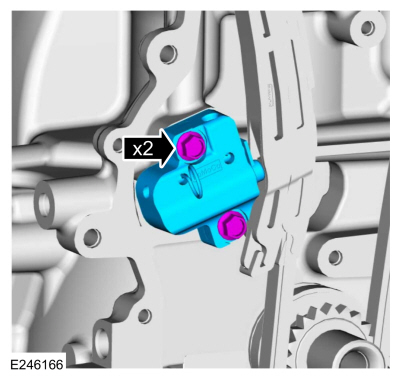







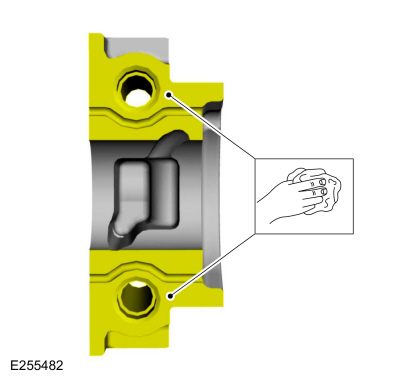

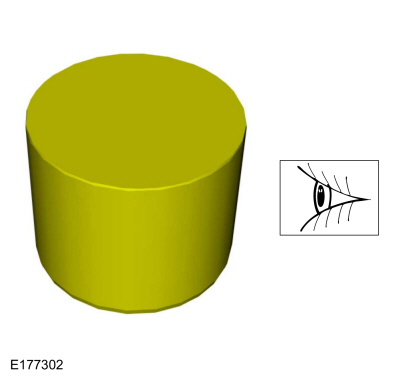
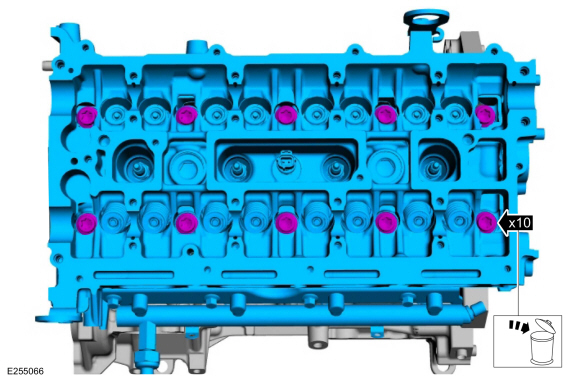
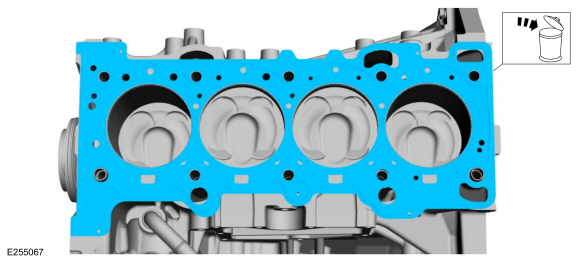
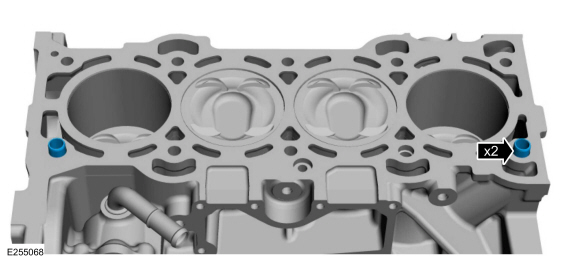

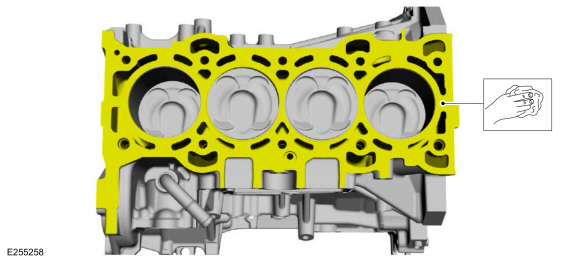
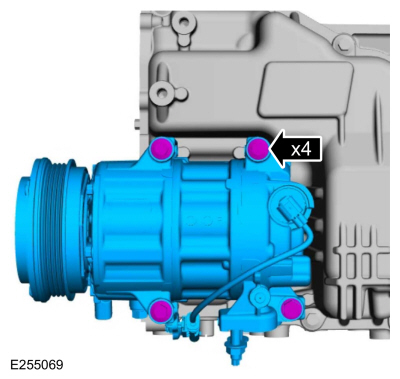
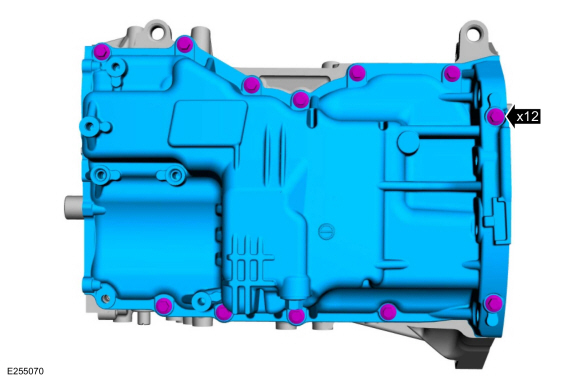


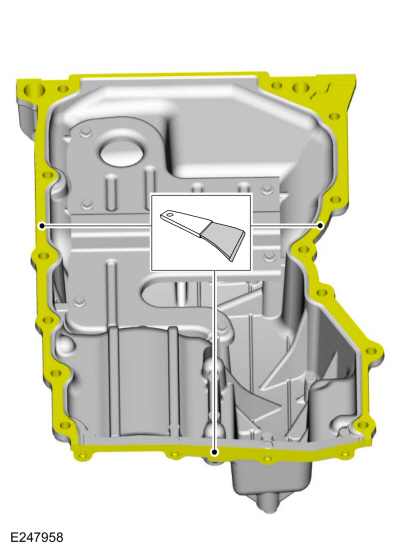

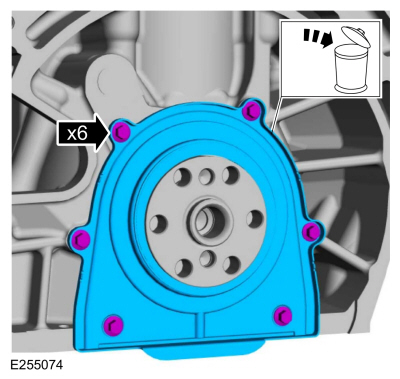

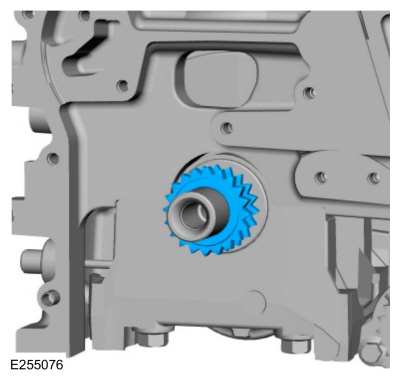
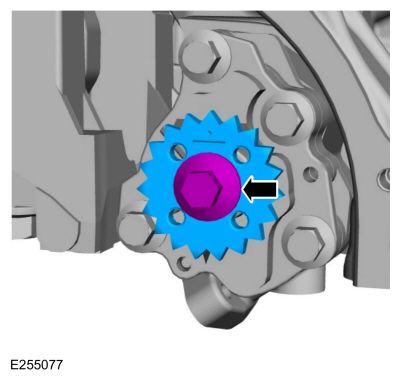




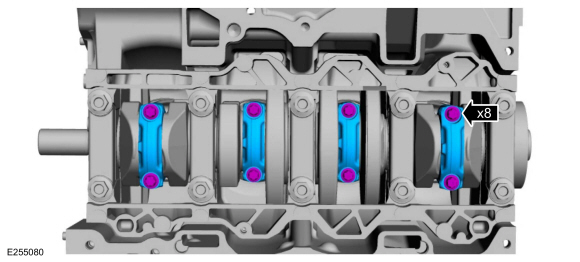
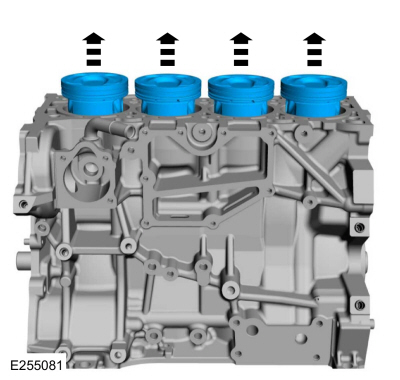
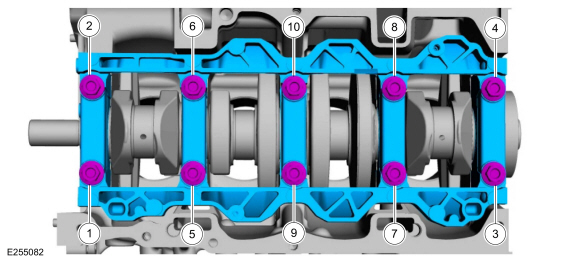
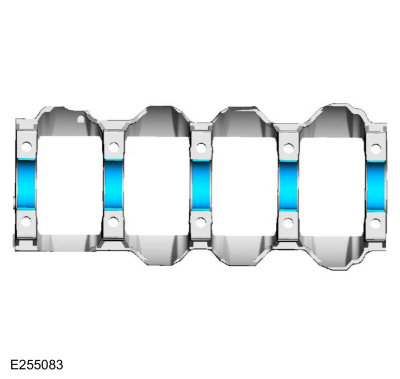
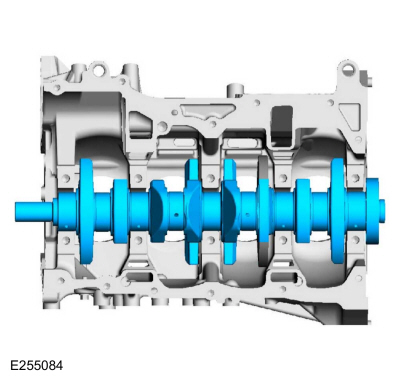


 Removal - Engine
Removal - Engine Disassembly and Assembly of Subassemblies - Cylinder Head
Disassembly and Assembly of Subassemblies - Cylinder Head
